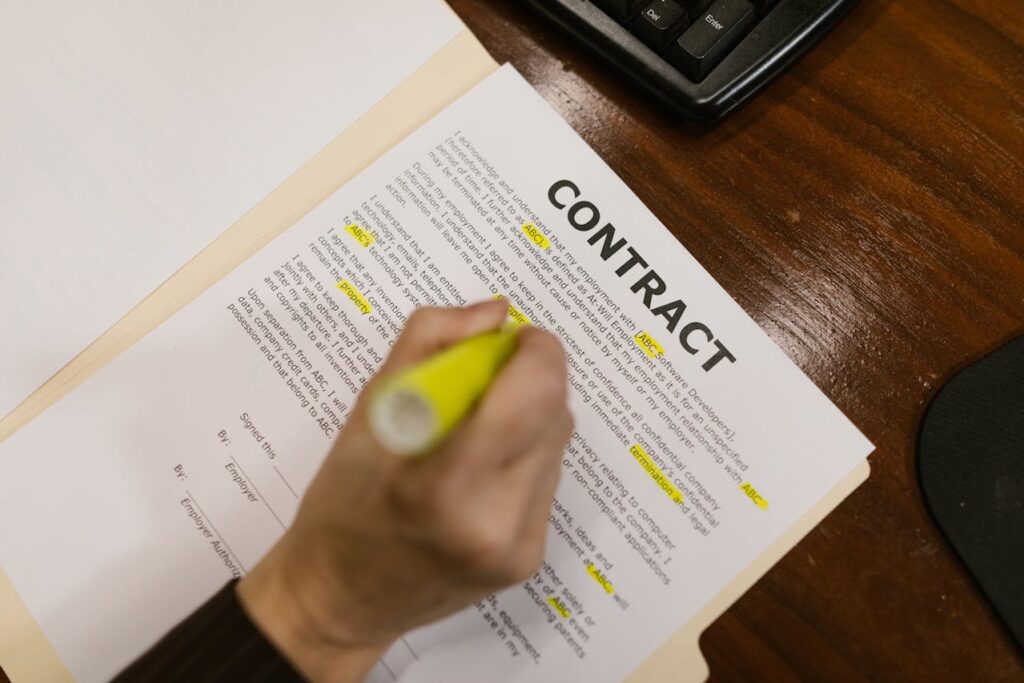An Overview Of How To Deal With Furlough And Redundancy

EMPLOYMENT ISSUES AND COVID-19
1. FURLOUGH
As a result of the economic impact of the COVID-19 pandemic, the Government introduced the Coronavirus Job Retention Scheme (CJRS) on 20 March 2020. The purpose of the scheme is to avoid redundancies by alleviating the pressure on employers to continue paying wages in full during the crisis period. The CJRS online claim portal opened on 20 April 2020.
The scheme applies in respect of employees who have been “furloughed”, meaning that they have been put on a period of leave during which they are not required to work (although they will be able to return on a part-time basis from August 2020).
The scheme does not change the employment relationship between employer and employee. Rather, it allows the employer to agree with employees that they will be put on temporary leave of absence (furlough), and then allows the employer to recover a proportion of pay from HMRC in respect of employees on that leave.
The scheme is backdated to 1 March 2020 and will remain open until the end of October 2020. It was initially extended from three to four months to the end of June on 17 April 2020, and was extended again on 12 May 2020 to the end of October 2020
As of 12 May 2020, 7.5 million employees have been furloughed and £10.1 billion has been claimed under the CJRS.
This blog is based on the information we have at the moment and advice may be subject to change as the situation develops. Government policy is evolving as the pandemic develops and the legislation and guidance may be updated at short notice.
All UK businesses are eligible for the job retention scheme. Furlough is available to employees and workers on the PAYE payroll at 29 February 2020. Any employees who have started since that date can be made redundant or given notice in accordance with their contract.
PLACING EMPLOYEES ON FURLOUGH
Placing employees on furlough leave is a variation to their contract. If the employment contract does not include a right to suspend on leave without pay (highly unlikely in a UK employment contract), you will need to:
- Decide which employees to designate as furloughed employees.
- Notify those employees of the intended change.
- Consider whether you need to consult with employee representatives or trade unions*
- Agree the change with the furloughed employees. The employment contracts of your staff will not permit you to reduce an employee’s pay, provide them with no work, and change their employment status, without agreement. However, faced with the alternatives, which are likely to be unpaid leave, lay-off, or redundancy, the majority of affected employees are likely to agree to be placed on furlough leave.
- Confirm the employees’ new status in writing. Ideally, you should advise how long you expect furlough leave to continue.
- Employees must be put on furlough for a minimum period of 3 weeks. You may wish to put employees on furlough leave for an initial period, subject to review. The furlough can subsequently be extended and this does not need to be in 3 week multiples but can be for any length of time after the initial 3 week period (providing it does not overrun the length of the Scheme)
- Submit information to HMRC about the employees that have been furloughed and their earnings through a new online portal. The COVID-19: support for businesses guidance states that HMRC will set out further details on the information required. I would advise speaking with your company accountant regarding the administrative details of this.
- Ensure that the employees do not carry out any further work while they are furloughed.
COLLECTIVE CONSULTATION
* Where you intend to vary the contracts of 20 or more employees, and you intend to dismiss employees who do not consent to the change in their terms, for the purposes of section 188 of TULRCA, those employees will be classed as dismissed by reason of redundancy. You will therefore have a duty to inform and consult appropriate employee representatives and notify the Secretary of State of your intention to make more than 20 redundancies in 90 days using form HR1. It is unclear, however, at this stage, whether the government expects employers to follow this process before placing employees on furlough leave. Employers could perhaps rely on the special circumstances defence if they do not consult. You would need to show that compliance was not reasonably practicable, and that the circumstances were “special”. In terms of reasonable practicability, the effect of the pandemic may mean that there are practical difficulties with appointing representatives in the normal way and undertaking full consultation, and also in terms of remaining solvent while that process is carried out. If there is no recognised trade union or standing body of representatives meaning, an election has to take place before consultation can begin and this would add to the time required and the difficulty. Given the speed at which this has happened it seems impractical for employers to follow the requirements to collectively consult but the government has stressed that current employment law continues to operate and this would include the collective consultation obligation.
EMPLOYEE REQUESTS FOR FURLOUGH
An employee can request to be placed on furlough, but you do not have to agree. It is the employer’s decision which employees to place on furlough, if any. However, you have a duty of care to your employees and where they raise valid concerns about returning to work, you should consider these. You must also not discriminate when deciding which staff to place or keep on furlough.
DURING FURLOUGH LEAVE
The furloughed employees cannot do any work for you during the period of furlough.
Otherwise the employee’s contract remains in force and it seems they will continue to accrue annual leave in the usual way. If an employee wishes to take annual leave when on furlough, they must be paid at their full salary to do so and you will need to make a top up of the Government 80% for this period if you are not already doing so.
You should consider how you will keep in touch with employees on furlough leave and seek to agree with an employee, before they are furloughed, how best they can be contacted during furlough You should refrain from excessive communication with a furloughed employee as this may suggest that the employee is, in fact, working. However, keeping an employee informed of developments by a weekly email (for example) is unlikely to be problematic.
ENDING FURLOUGH
The Government guidance does not provide a mechanism for ending furlough. Ideally, this would have been agreed when the employee was placed on furlough. For example, it might be agreed that furlough would come to an end when:
- The employer or employee ceases to be eligible for funding under the CJRS.
- The employer gives the employee notice (for example, one week) that their employment will resume on the terms and conditions which applied immediately before their period of furlough started, or on such amended terms and conditions as may be needed to take account of the applicable circumstances.
- The employee’s employment terminates for any reason (for example, by reason of redundancy).
If there is no contractual agreement in terms of ending furlough and a furloughed employee refuses to return to work in response to their employer’s request to do so, they are arguably not willing and able to work. If they are contractually obliged to return to work and fail to do so, they are unlikely to be entitled to wages for the same reason, and they may be subject to disciplinary action for unauthorised absence.
However, you should consider whether there is any particular reason (such as shielding) to explain why an employee cannot or will not return to work.
In addition to confirming the date you wish the employee to return to work, you should consider whether the following information will need to be provided:
- Potential temporary contractual changes which you are required to impose due to government restrictions. For example, different working hours and break times in order to stagger arrival and departure times to prevent crowding in workplace and on public transport.
- Any potential temporary or permanent contractual changes you wish to impose. For example:
- temporary reduced hours and pay for a period of time to allow the business to recover;
- new lay-off/short-time working provisions;
- changes to job descriptions/duties and mobility clauses.
- Any policy changes you need to make due to the circumstances. For example:
- preventing annual leave being taken during a certain period after re-opening;
- cost saving changes such as restricting recoverable expenses or a recruitment freeze.
- The temporary different ways of working that you may need to impose to comply with government requirements. This will vary depending on the employer and the industry concerned. However, these may cover:
- minimising the use of public transport to travel to and from work;
- measures to comply with social distancing requirements in the workplace;
- measures to reduce the spread of the virus in the workplace;
- minimising work-related travel and social contact;
- the responsibilities of staff to those entering the workplace.
- The special provisions you are making for shielding and vulnerable employees and information on how an employee should notify you if they believe they fall into this category and what steps you will then take.
CHANGES TO THE CRJS FROM AUGUST 2020
The Government has announced that new flexibility will be introduced from August to get employees back to work. The details of this are not yet available but it appears that from the start of August, furloughed workers will be able to return to work part-time with employers being asked to pay a percentage towards the salaries of their furloughed staff.
The employer payments will substitute the contribution the government is currently making, ensuring that staff continue to receive 80% of their salary, up to £2,500 a month.
More specific details and information is expected to be made available by the end of May 2020.
2. REDUNDANCY & FURLOUGH
One of the reasons for the Government to implement the CRJS was to avoid businesses having to close and make redundancies where their business was interrupted by reason of Covid-19.
When business are able to reopen or return staff to work safely, it may take some time for business to pick up again and for the staffing requirements to return to pre-March 2020 levels. Employers may therefore need to make redundancies between now and the end of October or subsequently, depending on the ongoing requirements of the business.
The big question is whether refusing to place an employee on furlough and making them redundant or making them redundant whilst still on furlough could amount to an unfair dismissal. There is no detail in the government CJRS guidance regarding this and, as yet given how new the CJRS is, there is no case law on the matter.
The Government CRJS guidance simply states that employees can be made redundant while on furlough or afterwards and that an employee’s redundancy rights will not be affected by being furloughed.
It is therefore difficult to determine whether an employment tribunal would find such a dismissal to be unfair at this stage. In accordance with the test for reasonableness under section 98(4) of the ERA 1996, it will depend on the particular circumstances of the case, including the size and resources of the employer. For example, whether you made the decision to make the employee redundant rather than furlough them before or after the scheme has commenced, and your financial position at the time are likely to be relevant circumstances.
Given the lack of clarity around this issue and the risk of subsequent claims for unfair dismissal, you should approach making redundancies very cautiously. In order to minimise the risk to the business, you must, as you would in any redundancy situation, make sure to follow a fair process in selecting employees for redundancy and in making the redundancies.
When choosing your selection pool of employees who may be made redundant you should consider the type of work which is ceasing or diminishing and which employees perform that kind of work. The pool may be made up of both furloughed and non-furloughed employees and you should not confine your selection pool to those already furloughed. This may be regarded as unfair because the selection process for putting employees on furlough may not have been as rigorous as is required where dismissal is being considered.
You are obliged to consult with employees before making redundancies and this has inherent practical difficulties while employees are on furlough. You would need to consider virtual meetings and, where the employees concerned do not have the facility to participate in a video call, the possibility of conducting consultation meetings by telephone.
3. WORKPLACE SAFETY & EMPLOYER LIABILITY
The Government and the HSE have set out guidance on working safely in the Coronavirus crisis.
All employers have a legal duty to take reasonable care for the health and safety of their employees.
If that duty of care is breached, you can be found liable to compensate employees for injury and losses which they prove were caused, or materially contributed to, by that failure.
To discharge the duty of care you should:
- encourage staff to work from home, wherever possible
- do a ‘risk assessment’ to identify what might cause harm and take reasonable steps to prevent it
- follow the government guidelines on working safely during Coronavirus.
To establish liability, an employee must not only prove breach of duty, but also that the breach made a material contribution to the injury sustained. It may be very difficult for an infected employee to prove that the infection was caused by a workplace breach, given the many other potential sources of infection, on the balance of probabilities.
Employees are also under a duty to take reasonable care for their own health and safety and that of those they work with. This would include following instructions given which are designed to protect them and others.
In order to be in a good position to defend any claims brought with regards to Covid-19, you should be able to show you have kept up to date with government advice and, more importantly have applied that general advice carefully, taking into account to the particular characteristics of your business and workforce.



